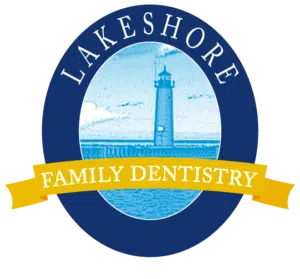Between gels, rinses and the in-office procedure, there is no shortage of teeth whitening options. Is it best to try it at home, or to pay a visit to your dentist? I weigh both options here so you can choose which method is best for you or someone in your family.
Every girl wants a bright smile for their special occasion. Every adult hopes to appear a few years younger. If your smile needs that extra glow, and you have healthy teeth and gums, there are a number of great teeth whitening options for you to choose from.
Which methods are safest? The most economical? And most importantly, which work best?
I break down the most popular teeth whitening options for you to consider, and the benefits of at-home vs. in-office whitening.
But first, it is imperative to evaluate why your teeth are discolored. Whether your stains are extrinsic or intrinsic determines if teeth whitening will actually brighten your smile.
Extrinsic staining comes from the food and drinks you consume. Red pasta sauce, dark berries, red wine, coffee and ketchup most commonly contribute to this type of discoloration.
If your teeth have yellow undertones, you most likely have extrinsic staining. In this case, your teeth will whiten nicely.
Intrinsic staining, on the other hand, will not whiten as well. That is because the discoloration is internal — from a dead nerve, for instance.
Intrinsic staining typically has gray undertones. In certain cases, the tooth even turns dark gray.
External whitening will not restore the vibrant white enamel color if the staining is intrinsic.
It is also important to note that whitening only works on natural tooth structures. If you have a crown or a filling, do not waste your time or money. Your teeth will not whiten.
You should not use whiteners if you are pregnant, nursing, or have gum problems or untreated dental decay. Take extra caution if you have sensitive teeth.
If you have extrinsic staining, it is important to consider your at-home vs. in-office teeth whitening options.
At-home:
- Whitening rinses. As easy to use as mouthwash, these rinses are packed with whitening agents. However, because users only rinse for a couple of minutes a day, teeth whiten gradually. You may not see a difference for a couple of months.
- Whitening toothpaste. These toothpastes contain mild enzymes that scrape away stains when used with a toothbrush. Use an electric toothbrush to blast away more stain. Keep in mind that in some cases these toothpastes can make teeth more sensitive.
- Gel strips. Instructions call for attaching strips to your teeth for one to two hours per day for up to two weeks. These gel strips are reportedly very effective, although they are a significant commitment.
- Whitening trays. Used like a mouth guard, these are plastic trays filled with whitening gel. While they whiten teeth fast, these over-the-counter trays usually are not custom-made to fit your mouth. Take caution, as they may irritate your gums.
At-home Benefits:
- Cost. An in-office whitening procedure can cost around $300. On the other hand, a package of over-the-counter white strips ranges from $20 to $50.
- Convenience. It may be more convenient to whiten at home than travel to the dentist for a lengthy procedure. If you have healthy gums and teeth, and excellent dental hygiene habits, at-home methods — especially gel strips — may be an option.
In-office:
Most commonly, your dental office will professionally isolate and carefully apply a bleaching solution to your teeth. This solution is stronger than what is used in home kits.
Usually, the procedure is done in the office. A heat or light source may be used to quicken the process.
In-office Benefits:
- Efficiency. Whitening in the office is more efficient. The procedure lasts 1-2 hours, and you can leave with your teeth 2-3 shades lighter. Compared to at-home whitening, a process which can take weeks, you can save a lot of time.
- Safety. Having your teeth whitened in a professional environment is safer than doing it at home. For instance, if a whitening strip sits on your gum for too long, it can temporarily damage it.
Like most dentists, I am trained to administer a powerful whitening solution in safe amounts, and in the correct places.
No matter which option you choose, be sure to consult your dentist before you or someone in your family whitens his or her teeth using any of the methods listed. I know the prospect of a whiter, glowing smile is exciting, but remember, safety comes first.

